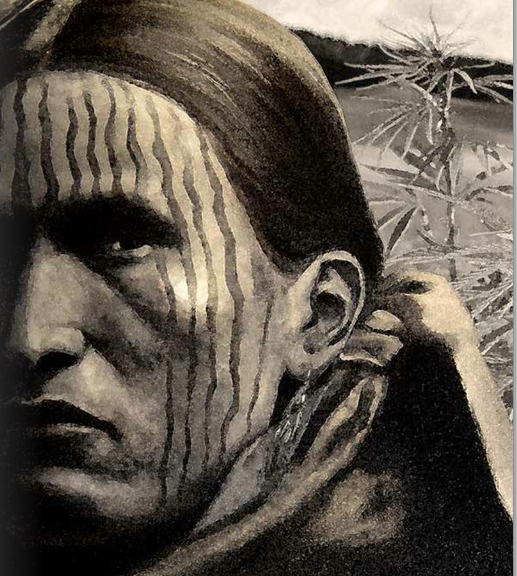Pot on the Rez: Native Tribes Consider Marijuana Businesses

Native American tribes across the nation are transitioning into the marijuana business.
 There are 566 federally recognized Indian nations located within two-thirds of U.S. states, and they’re all subject to their own tribal laws and governments. Alaska is home to the most native people, with 229 nations within its great expanse; the remaining 337 nations are located in 33 other states, according to the National Congress of American Indians (NCAI).
There are 566 federally recognized Indian nations located within two-thirds of U.S. states, and they’re all subject to their own tribal laws and governments. Alaska is home to the most native people, with 229 nations within its great expanse; the remaining 337 nations are located in 33 other states, according to the National Congress of American Indians (NCAI).
Nearly nine months after Colorado and Washington voted to legalize marijuana in 2012, the federal government responded with a memo that laid out eight priorities to U.S. Attorneys regarding the enforcement of federal drug laws in those states. Known as the Cole Memorandum, its main concerns are distribution of marijuana to minors and the diversion of marijuana from states where it’s legal to ones where it’s not.
This brought up the question about tribal sovereignty: If states are given the leeway to legalize marijuana, why not sovereign Native American nations? In response to this question, the Department of Justice (DOJ) issued another memo, this time from Monty Wilkinson, Director of the Executive Office for U.S. Attorneys. “The eight priorities in the Cole Memorandum will guide United States Attorneys’ marijuana enforcement efforts in Indian Country,” he wrote, “including in the event that sovereign Indian Nations seek to legalize the cultivation or use of marijuana in Indian Country.”
The first tribe to seize the opportunity is the 250-member Pinoleville Pomo Nation in Northern California near Ukiah, long known as a center of the famed Emerald Triangle marijuana cultivation economy. A 10,000-square-foot state-of-the art greenhouse is being constructed in cooperation with FoxBarry Farms of Kansas and United Cannabis Corp (UCANN) of Colorado. “We have a history of using plants for medicine,” Pomo Tribal Council Vice Chairwoman Angela James told Reuters. “The tribe is seeking economic development, and we’re comfortable with these partners and this product.”
More than 100 tribes are following the Pinoleville Pomo Nations lead. The Torres Martinez Desert Cahuilla Indians of California will begin growing and selling medical marijuana this summer. The Fort Peck Assiniboine and Sioux Tribes of Montana and the Red Lake Band of Chippewa in Minnesota have begun studying the feasibility of legalizing marijuana. The Suquamish Tribe in Washington last year notified authorities it was considering the production and sale of marijuana. In Maine, three of the state’s four recognized tribes are considering a move into the marijuana business.
At the end of February, 75 tribal leaders from across America gathered at the Tulalip Resort Casino on the Tulalip Reservation in Washington State to form the Tribal Cannabis Association. At the end of March, San Diego hosted a symposium, “Marijuana: The Next Big Thing in Native American Economic Development?” The Green Rush that’s consumed Colorado and Washington indeed seems primed to hit Indian Country.
How Native Is Marijuana?
The Native American tradition and history of using plants as medicine are clear to anyone who thinks of the “peace pipe.” But in actuality, the peace pipe wasn’t used by all tribes, and was ceremonial for most that did. Some tribes used tobacco as a sacrament, and numerous tribes used many herbs and flowers including sage, mint, salvia, peyote, mullein—and cannabis.
Native people also have a long history with hemp as an industrial crop. British colonists learned hemp cultivation techniques from Native Americans in the early 17th century. In the previous century, French explorer Jacques Cartier wrote that the land was “frill of hempe which groweth of itselfe, which is as good as possibly may be scene, and as strong.”
The Lakota Sioux Nation has been battling the federal government over rights to cultivate any crop they wish, rights recognized by the Treaty of Fort Laramie in 1868. In 1998, the tribe passed laws allowing the cultivation of non-psychoactive cannabis hemp. Alex White Plume planted 300 acres in 2000, which the DEA then raided and eradicated. In 2001, the president of the Oglala Lakota Nation argued that the treaty was not superseded by the 1970 Controlled Substances Act, as the government maintained. The federal courts disagreed, and, lacking the funds to take an appeal to the Supreme Court, White Plume stopped growing hemp. The DEA kept raiding the land, though, because the hemp kept coming back naturally, proving itself to be the perfect crop for the Badlands of South Dakota.
Now, thanks to Wilkinson’s memo, Native Americans everywhere may choose to allow for hemp cultivation, even on the Lakota Pine Ridge Reservation in South Dakota, where alcohol is banned. (However, Alex White Plume told Indian Country Today, “I won’t be growing it because I have a lifetime restraining order.”)
Not all tribes are as sanguine about marijuana, with many citing the devastation alcohol and drug abuse has wrought on Native communities. The Navajo Nation, which bans alcohol, and whose lands would make it the 44th-largest state, passed resolutions against Arizona’s bill to legalize marijuana as well as the Wilkinson memo, stating: “Legalization of marijuana fails to align with the Navajo Nation’s values and traditions.” The Affiliated Tribes of Northwest Indians, representing nearly 50 tribes, passed a resolution last year opposing legalization of marijuana, citing its “threat to the health and safety of all tribes, especially our youth.” Washington State’s Yakama tribe has outlawed marijuana on its 1.2 million acres and wants to ban it on their ancestral lands, too, nullifying Washington’s 2012 legalization in about one-fifth of the state.
Continue reading this full article in the Freedom Leaf magazine digital edition here

